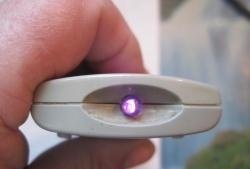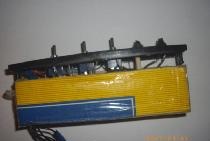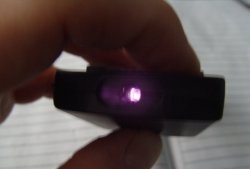The starter is another matter. The power lines take the shortest possible path, and control three thin wires (usually in one cable) go to the convenient location of the buttons.
Secondly, in addition to manual control buttons, there may be automatic devices (light, temperature and pressure sensor) that themselves can control the operation of the load.
In addition to the above factors, another advantage of the starter is the switching of a fairly powerful current.
Therefore, knowing how to connect control buttons to the starter is simply necessary. Yes, you can find a lot of electrical circuit diagrams on the Internet, but how to connect the starter “live” with a diagram is not always clear.Even experienced electricians with extensive experience, without doing this for a long time, may not immediately remember the connection sequence. What can we say then about a person who does not have a special education?
The rest of the article will describe the step-by-step connection of control wires to the starter with explanatory photographs.
So, what is needed for this job:
1) a block with two buttons - an on button, - freely open contacts, and a shutdown button - freely closed contacts;
2) a starter with a 220-volt coil and one additional free-open contact;
3) cable or wire of small cross-section with three cores. The cable length is selected depending on where the starter will be located and where the control unit will be.

There is no mention of a cable or wire supplying and going to the load - this goes without saying.
Now the sequence of work:
1) connect the load wires to the starter. If it is three-phase, then we connect one wire to each contact. Well, in the case of a single-phase load, you can connect these three contacts with jumpers and connect the phase wire of the load to it. This will increase the reliability of the starter, since the current will flow through three contact lines;
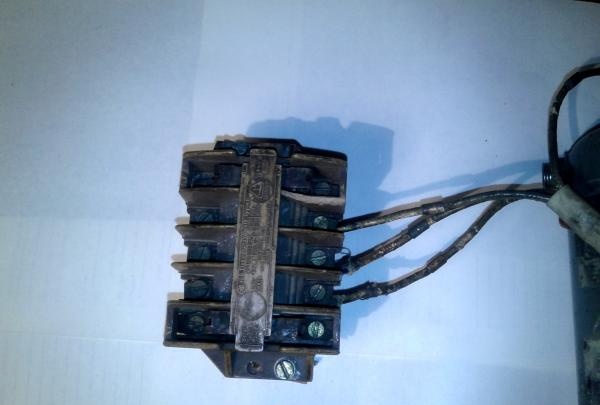
2) from the lower contact of the red button (shutdown), we lead the wire to the starter coil;
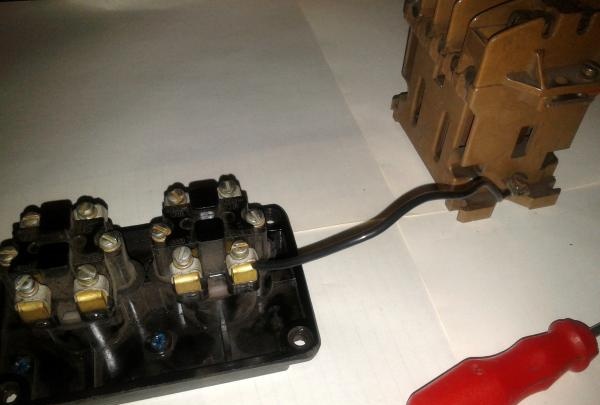

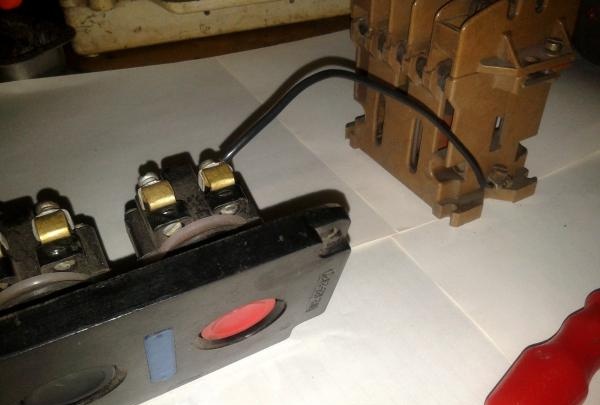
3) connect the second contact of the red button with a jumper to the adjacent contact of the power button. Sometimes such jumpers are already provided by the button manufacturer;
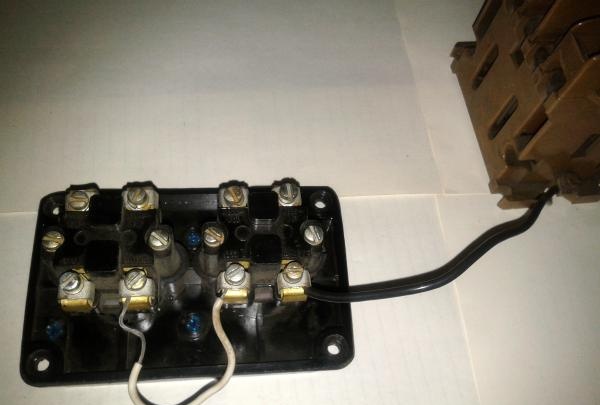
4) connect the wire from the terminal where the jumper was placed on the “ON” button and lead it to an additional normally open contact.

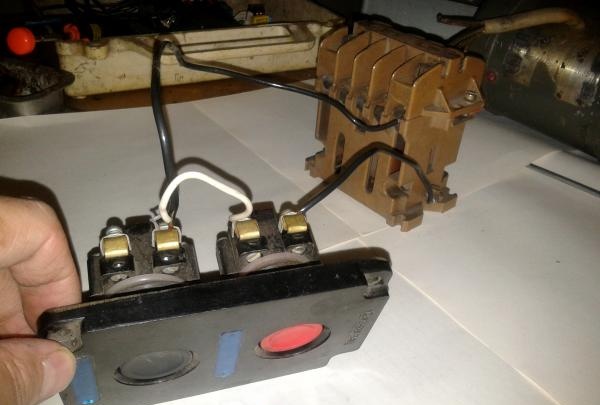
By the way, normally open is when the starter is disconnected and the contacts are not connected;
5) from the extreme terminal of the same button, connect the wire to additional contacts on the other side.In fact, now the “ON” button is duplicated by these additional contacts;
6) so that the buttons can supply control voltage to the starter coil, connect one end of the wire to any phase, and the other to the terminal of additional contacts;
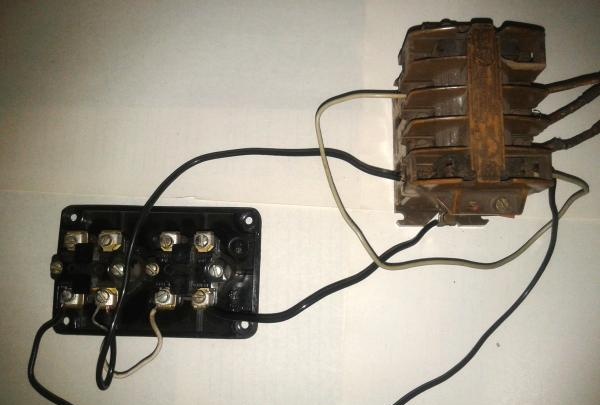
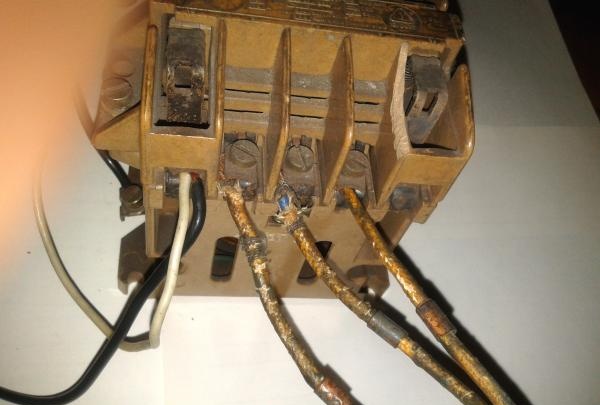
7) connect “ZERO” to the second terminal of the starter coil;
All that remains is to connect the power cable - in the photo it is corrugated, and everything is ready to be turned on.

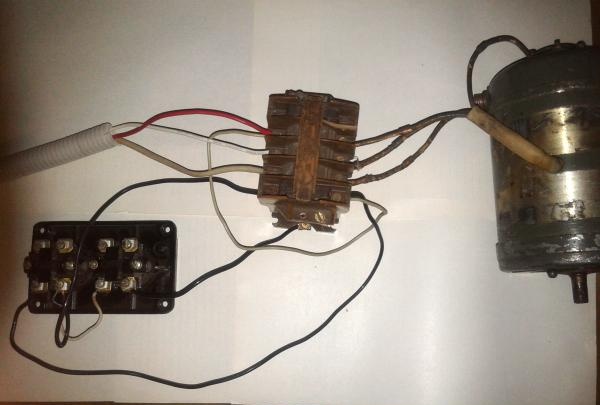
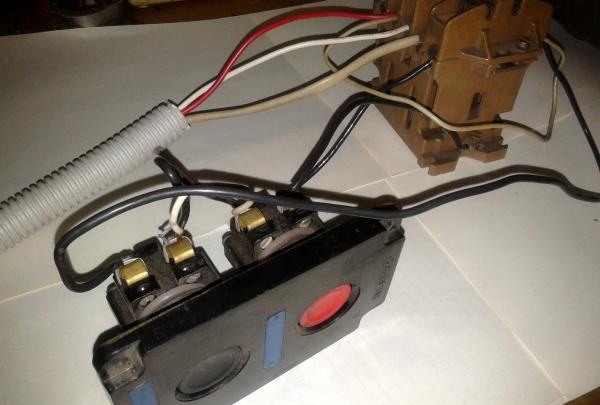
How the scheme works.
When you press the “START” button, the phase will first pass through the closed contacts through the “STOP” button circuit to the starter coil. So, as soon as there is zero at the other end of the coil, the electromagnet will be retracted and the contactors of the starter will close, including additional ones. Since these contacts will be closed, releasing the button will not break the circuit and the starter will work. Next, pressing the “STOP” button, the control phase is interrupted and the coil is discarded. Accordingly, all contacts open.
That's all. Try it and everything will work out.

